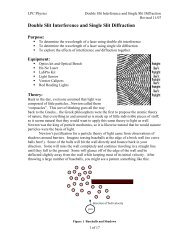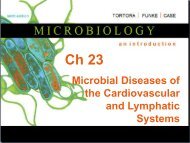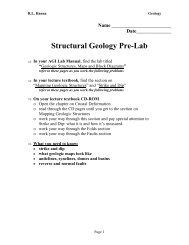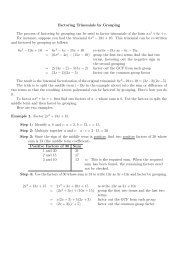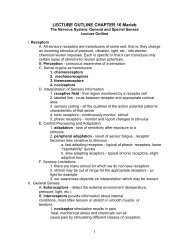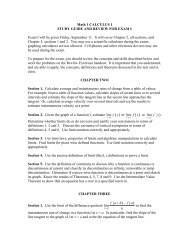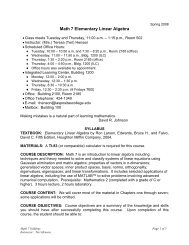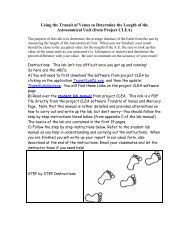Classification of Microorganisms
Classification of Microorganisms
Classification of Microorganisms
You also want an ePaper? Increase the reach of your titles
YUMPU automatically turns print PDFs into web optimized ePapers that Google loves.
Student Learning Outcomes<br />
Define taxonomy, taxon, and phylogeny.<br />
List the characteristics <strong>of</strong> the Bacteria, Archaea, and Eukarya domains.<br />
Differentiate among eukaryotic, prokaryotic, and viral species.<br />
Explain the scientific naming<br />
Differentiate between culture, clone, and strain.<br />
Compare and contrast classification and identification.<br />
Explain the purpose <strong>of</strong> Bergey’s Manual.<br />
Describe how staining and biochemical tests are used to identify bacteria.<br />
Explain how serological tests and phage typing can be used to identify an<br />
unknown bacterium.<br />
Describe how a newly discovered microbe can be classified by ribotyping,<br />
DNA fingerprinting, and PCR.<br />
Describe how microorganisms can be identified by nucleic acid<br />
hybridization, DNA chips, and FISH.<br />
Explain and apply a dichotomous key<br />
Copyright © 2006 Pearson Education, Inc., publishing as Benjamin Cummings



